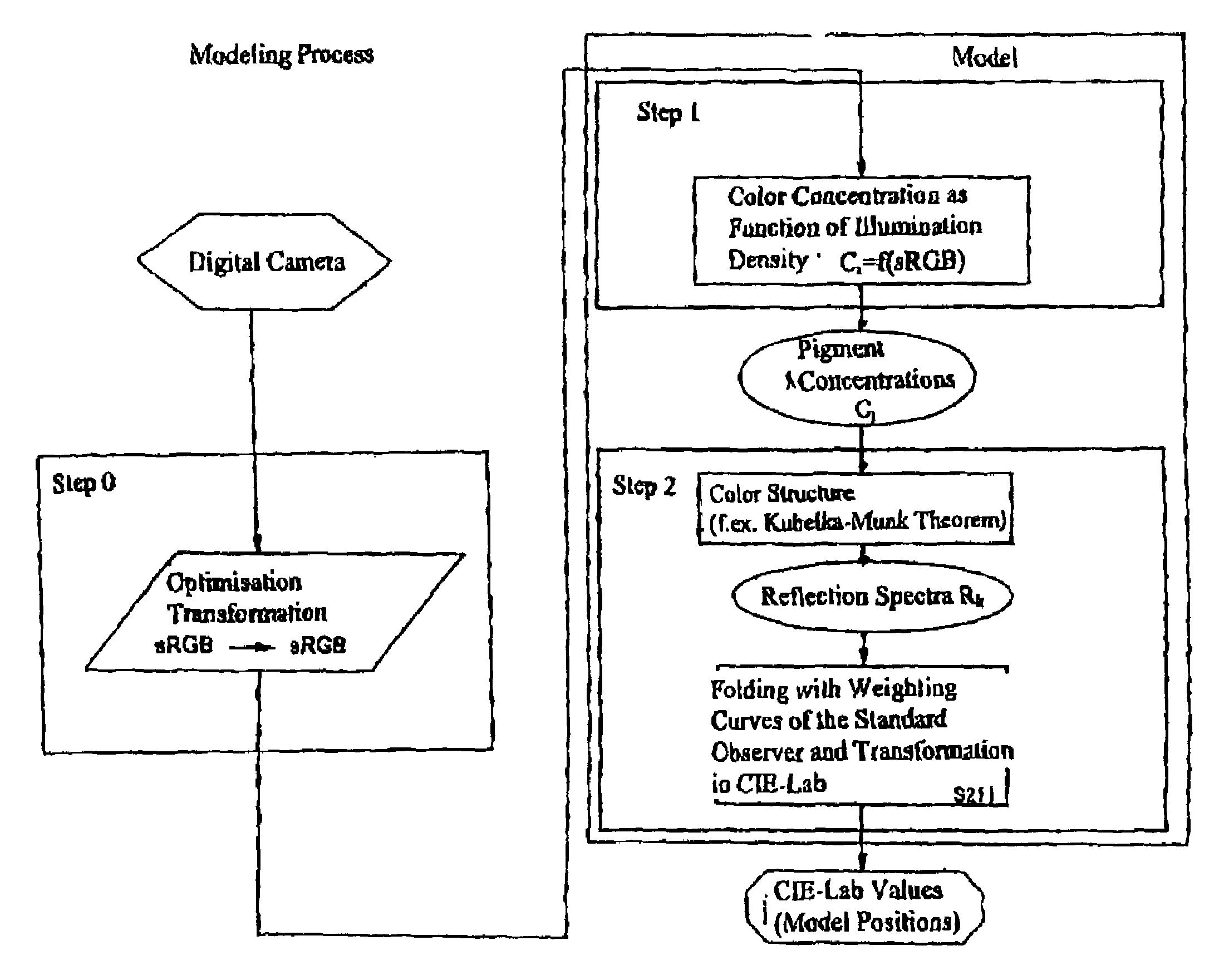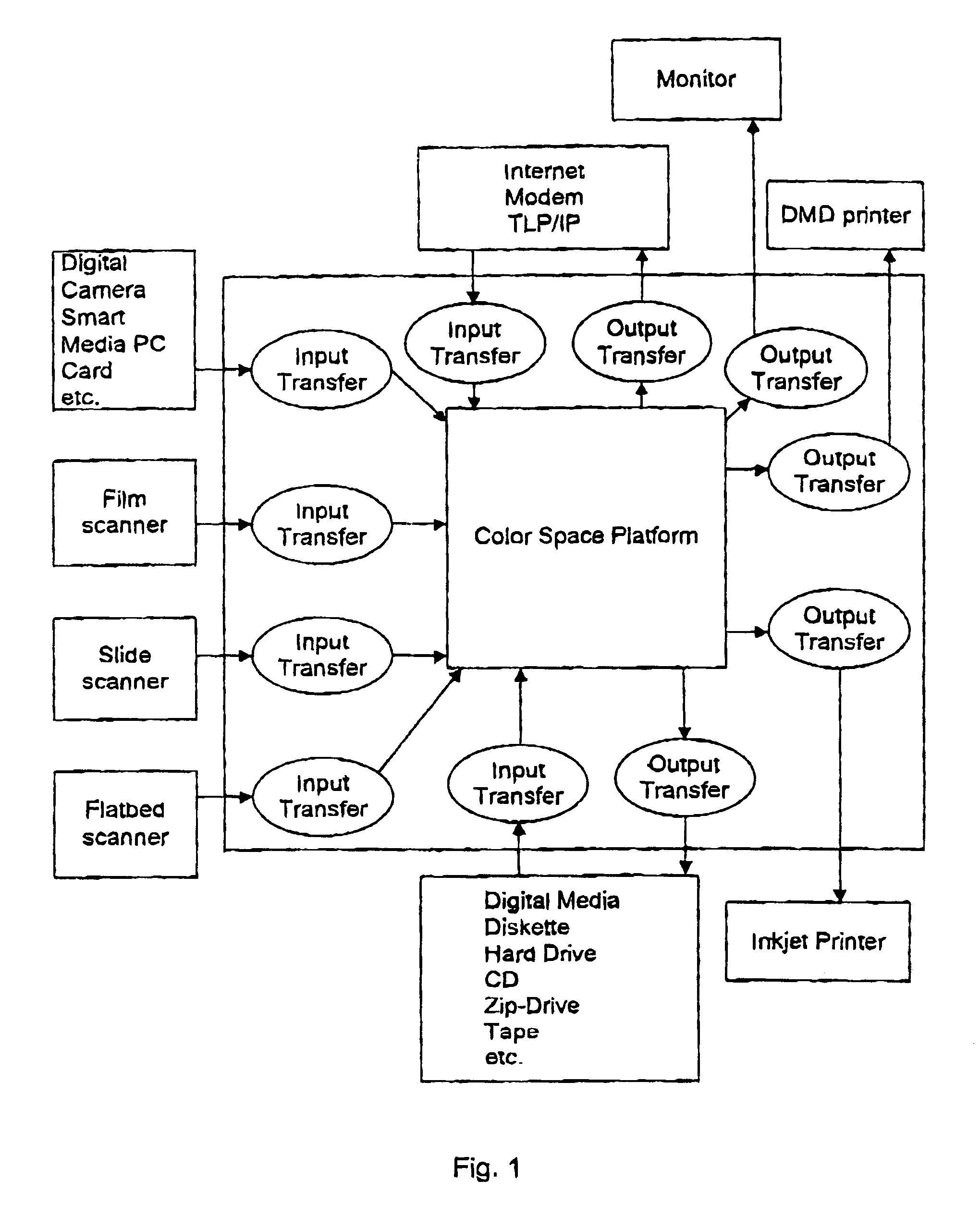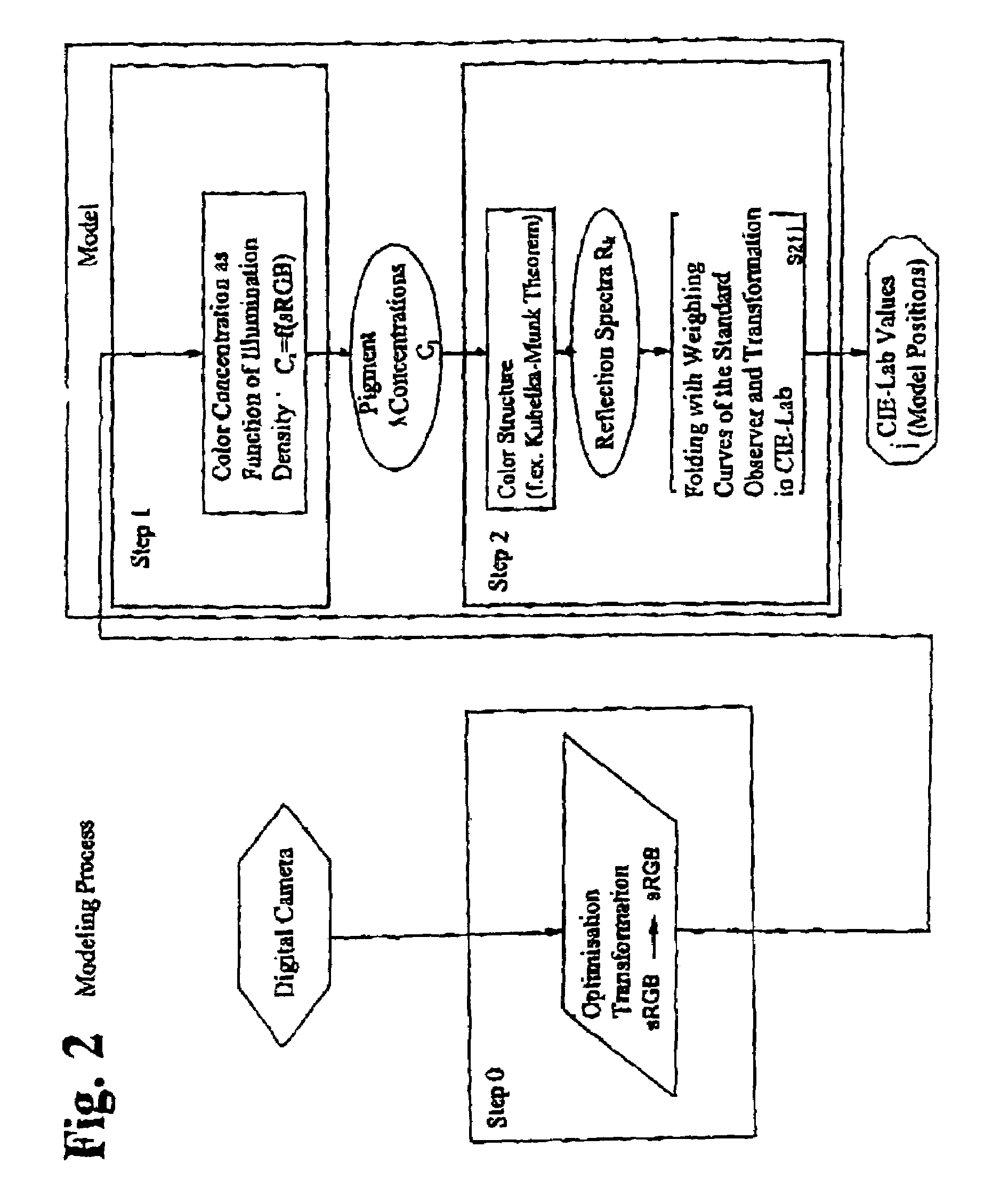Optimization of image data by color management
a technology of image data and color management, applied in image data processing details, image data processing, printing, etc., can solve the problems of loss of contours, weak shifts and distortions between srgb color space and printer color space, and normal failure of monitors to reproduce the darker, saturated colors of photographic paper
- Summary
- Abstract
- Description
- Claims
- Application Information
AI Technical Summary
Benefits of technology
Problems solved by technology
Method used
Image
Examples
Embodiment Construction
[0062]FIG. 1 shows a schematic view of a color management wherein an exemplary process in accordance with the invention is used. In the color management, a desired color space or standard space serves in the middle as common platform (second color space). The CIE-Lab color space is preferably selected as standard space (second color space). It has desired properties, namely it is independent of the type of pigments system (for example printer with paper), which operates with an image reproduction device, pigments and a medium, and covers the spaces of all possible pigment systems. The color data reproduced in the color space of a specific image are not completely independent from the type of devices which were used during the capture and digitalization of the image information (for example camera, film scanner), since the details of an image reproduced in this color space disclose the hue range or gamut of these input devices and since different input devices typically cut or distor...
PUM
 Login to View More
Login to View More Abstract
Description
Claims
Application Information
 Login to View More
Login to View More - R&D
- Intellectual Property
- Life Sciences
- Materials
- Tech Scout
- Unparalleled Data Quality
- Higher Quality Content
- 60% Fewer Hallucinations
Browse by: Latest US Patents, China's latest patents, Technical Efficacy Thesaurus, Application Domain, Technology Topic, Popular Technical Reports.
© 2025 PatSnap. All rights reserved.Legal|Privacy policy|Modern Slavery Act Transparency Statement|Sitemap|About US| Contact US: help@patsnap.com



